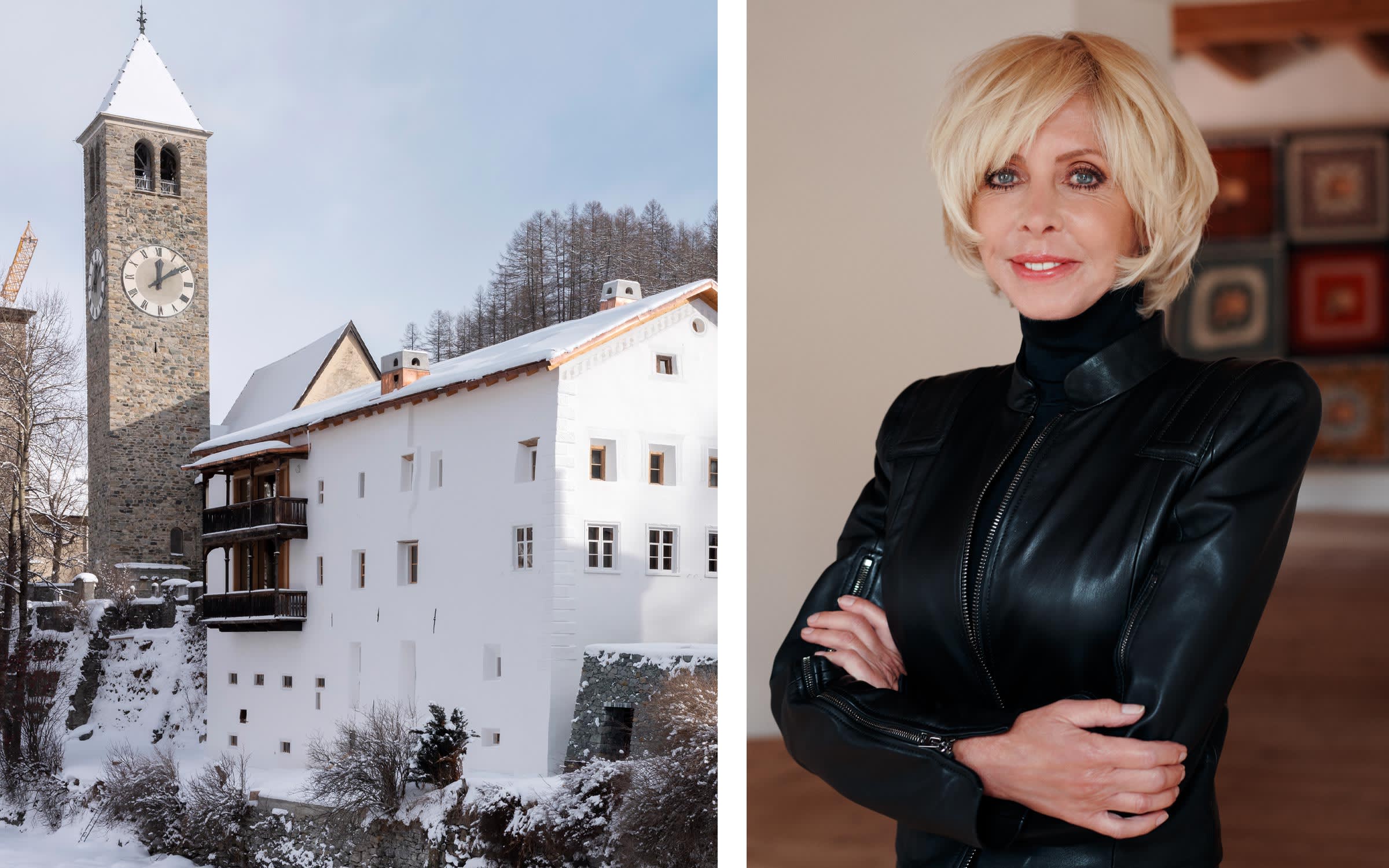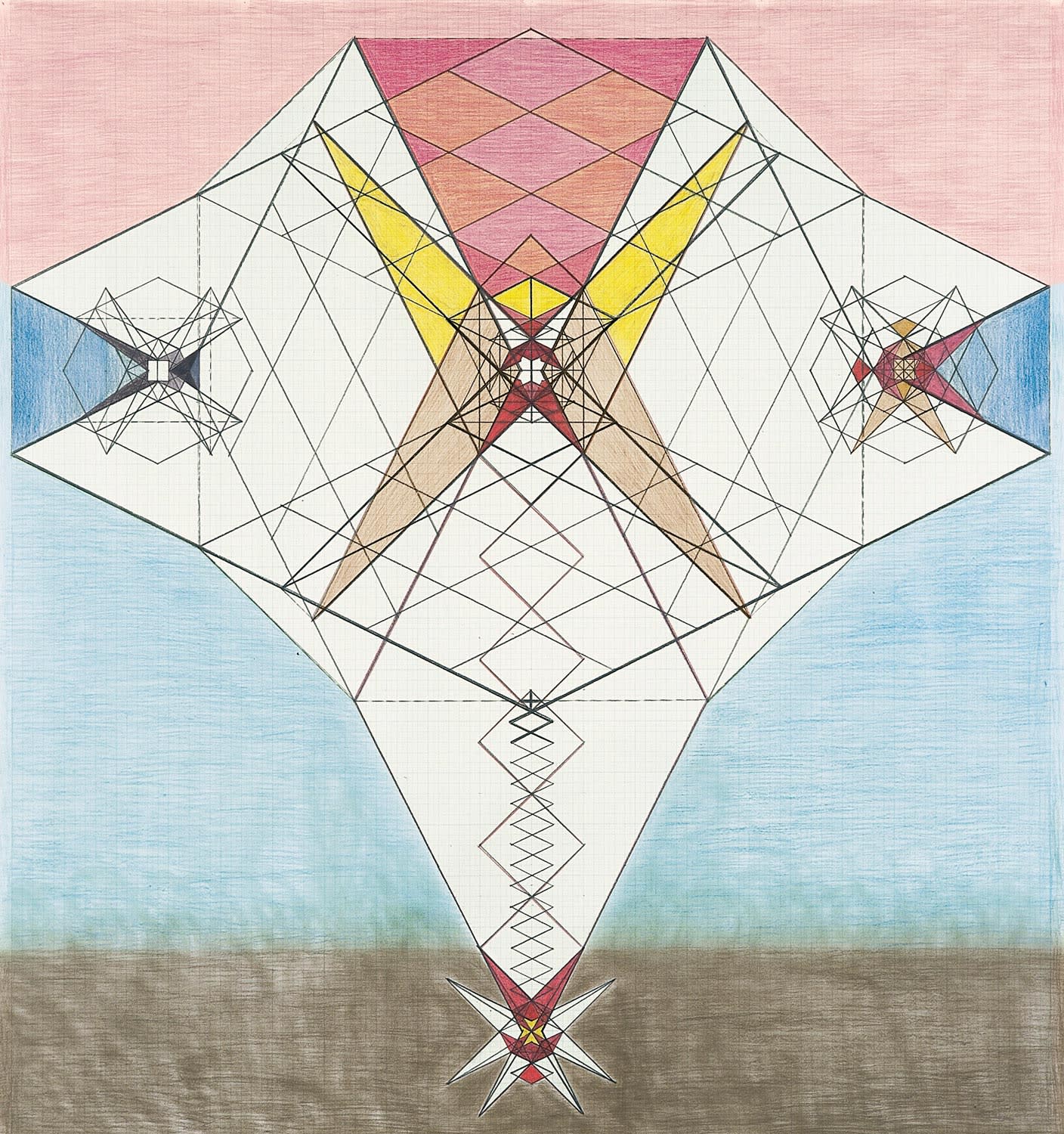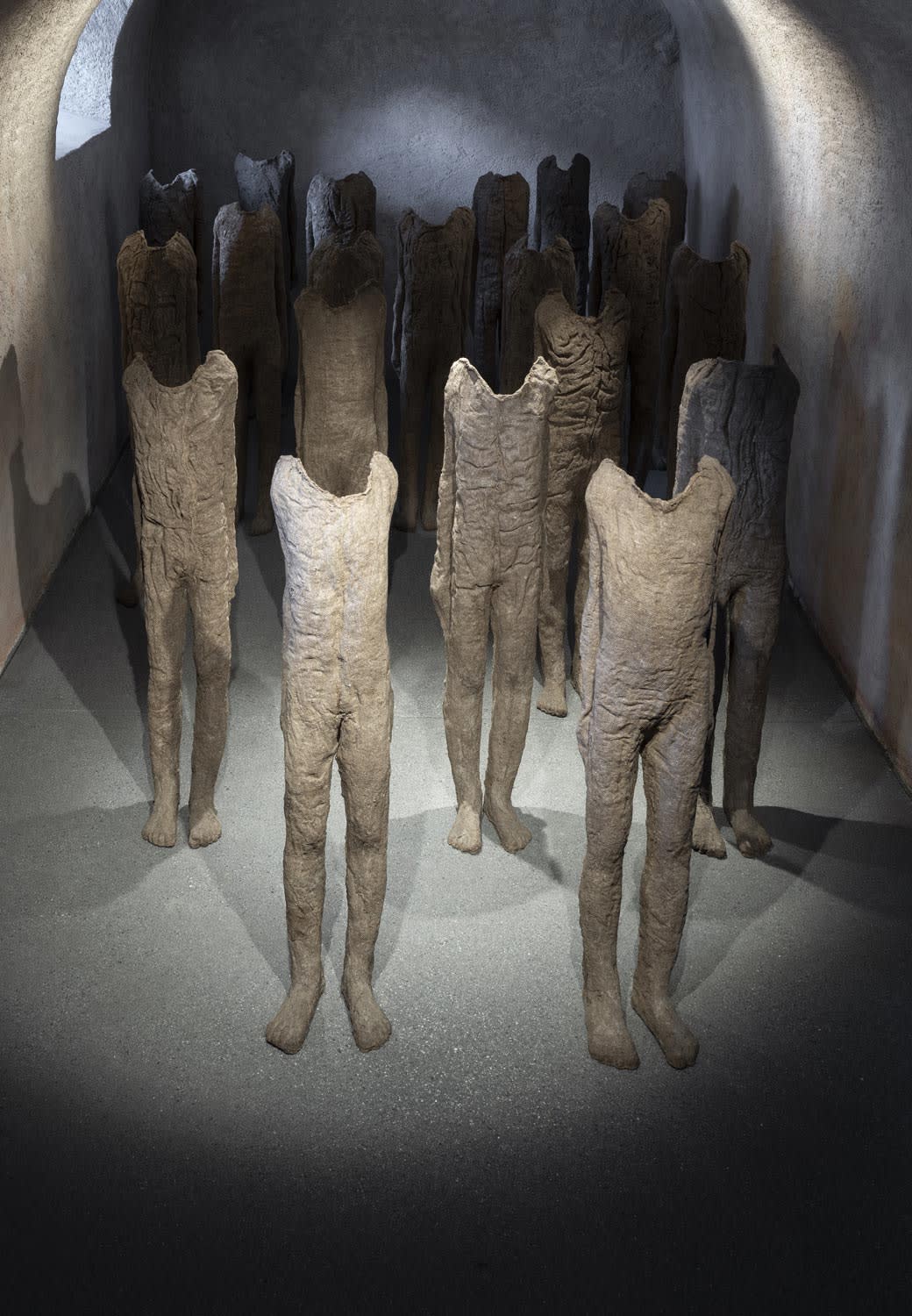Meet Grażyna Kulczyk, the Polish entrepreneur who turned an Alpine village into an artworld destination
‘Muzeum Susch is intended to be a place of contemplation and a challenge to accepted ideas,’ she says
Log in and subscribe to receive Art Basel Stories directly in your inbox.
It is a fundamentally human imperative to keep going, sometimes despite skeptical advice. Grażyna Kulczyk has developed this elemental priority into her mission statement. ‘I’ve never thought about failures all my life,’ she offers. ‘The road to success is when failure is not an option.’
When her vision came to life with the opening of Muzeum Susch, it was against the odds: Few had believed her ambitious plan to create a world-class institution outside of St. Moritz. But it would take only a few months for the museum to become an artworld destination, visited by more than 22,000 visitors since January 2019.

Susch is a remote town on the ancient pilgrim route to Santiago de Compostela in the Engadine valley of the Swiss Alps. What started with a conscious decision to work on the periphery rather than in the center, drawing on the close connection to nature and the idea of a ‘new pilgrimage,’ a confession to the concept of ‘slow art,’ became a timely opening in what has since been referred to as a new hot spot for contemporary art.
Hauser & Wirth recently joined the rounds of galleries like Karsten Greve, Monica de Cardenas, von Bartha, Vito Schnabel, and Andrea Caratsch, to name but a few, holding fort in the valley, and a diversified, recently revived institutional landscape with artist Not Vital’s Tarasp Castle and the annual Engadine Art Talks, the latter just anointed as one of Switzerland’s top events.
The neighborhood, once known to be an escape for painters and intellectuals like Giovanni Segantini, Rainer Maria Rilke, Alberto Giacometti, Friedrich Nietzsche, and Thomas Mann, is brimming with culture where many still think first of skiing and hiking as the main activities available to both Swiss residents and tourists from all over the world.

‘One can hardly imagine a more subtle monument, humble to the place and its history,’ wrote Frankfurter Allgemeine Zeitung’s Kolja Reichert about the Muzeum Susch complex, built on the remains of a rural monastery from the 12th century and extending to the existing 19th century industrial brewery building, now housing 1,500 square meters of exhibition space. The project, conceived with young Swiss architects Chasper Schmidlin and Lukas Voellmy, balances sympathy to the history of the buildings, establishing space for a contemporary art museum within this context while introducing minimal architectural interventions.
‘Muzeum Susch is intended to be a place of contemplation and a challenge to accepted ideas, a museum that is like no other,’ says Kulczyk. A vessel for many of the collector’s ideas and experiences spanning throughout her career – from building a blue-chip private collection over 35 years to creating a business complex in her hometown Poznań Stary Browar (in 2003) following her 50:50 concept (with 50% investment in business and 50% in culture). Her Polish space also housed a museum with exhibitions mostly derived from her collection, and where events like the annual Art & Fashion Forum were hosted, too. And Stary Browar is home to the country’s first (and still only) privately funded space for contemporary choreography and new dance.

But Muzeum Susch goes beyond exhibiting artworks from Kulczyk’s collection. The institution engages in experimental approaches to exhibition making, bringing along collaborations with and loans from international institutions, and supports education and research. External curators are invited to conceive temporary exhibitions, while permanent installations by artists like Monika Sosnowska, Heidi Bucher, Adrián Villar Rojas, Mirosław Bałka and Piotr Uklański are redefining the notion of site-specific works of art. Extended activities in Susch include an annual conference program bringing artists and scientists together (Disputaziuns Susch), an academic research center in collaboration with Institut Kunst Basel (Instituto Susch/The Women’s Center for Excellence), an interdisciplinary residency program (Temporars Susch) and a choreography scheme (Akziun Susch).
Kulczyk has a history of nurturing new ideas and technologies and for sharing her visionary concepts with a broad public. ‘It is an inner need for me to be in constant contact with the work of ambitious and fascinating artists,’ she says. ‘And a common thread is the desire to empower and train others in the arts through my past and present activities.’ This is to be continued in the future, infused by the experience of these tall, grandiose mountains – an idyllic setting for a visionary project.
Mareike Dittmer is the director of the Art Stations Foundation CH / Muzeum Susch.

